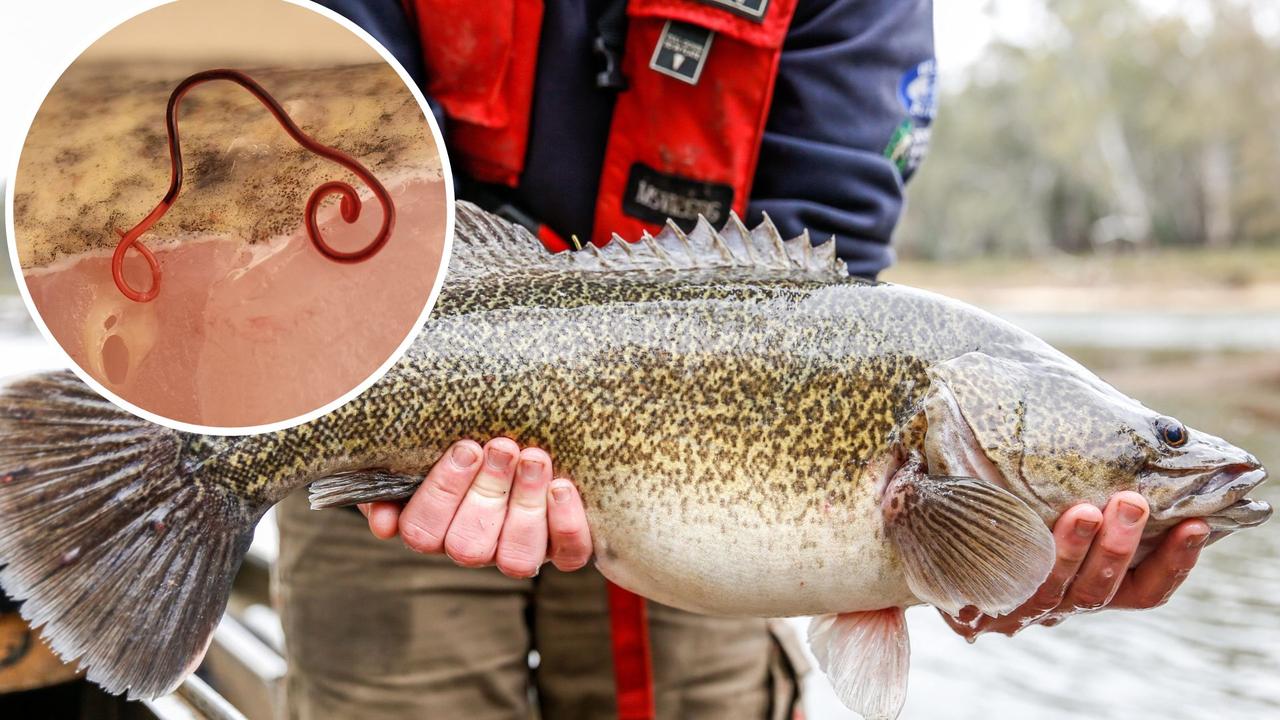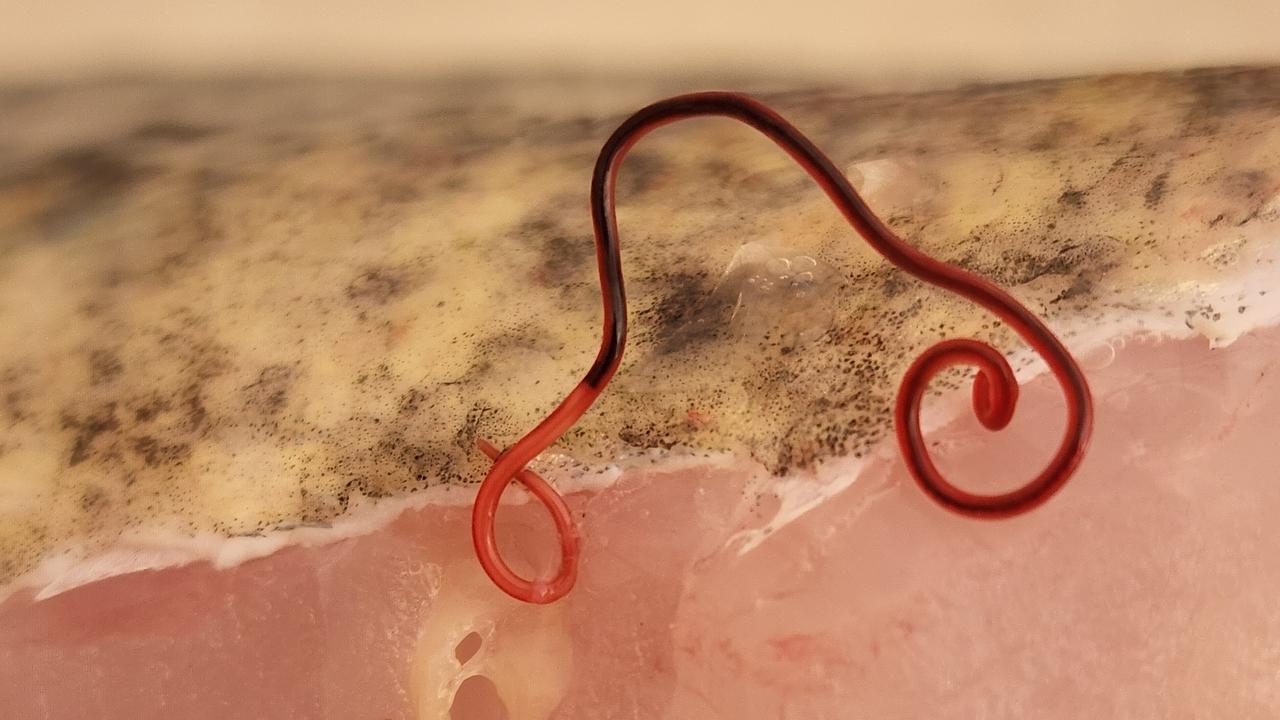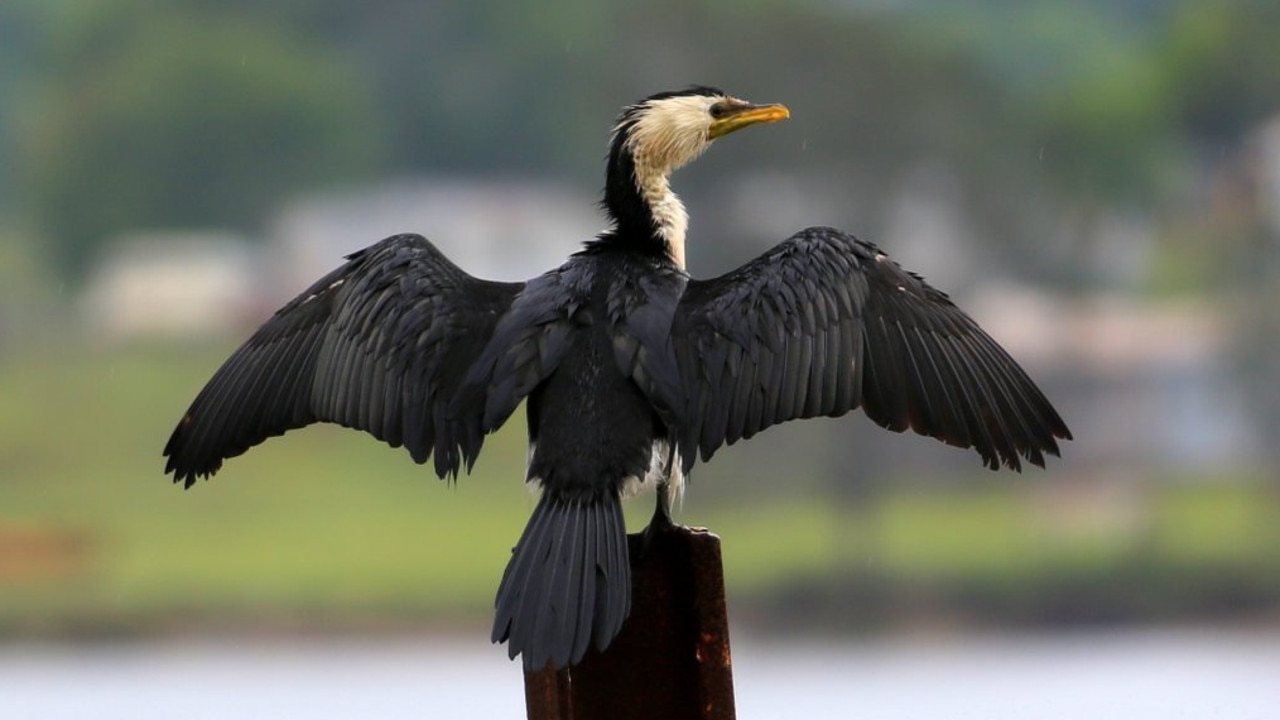Researchers find gut-burrowing parasite in native fish across NSW
Researchers are warning that a parasite, which has been found in freshwater fish, can burrow into the human gut and cause “severe pain”.

Researchers have detected an invasive parasite in native freshwater fish in NSW which, if eaten, can burrow into the gut of an infected human.
A “high degree” infection of the parasite species eustrongylides excisus was found in the flesh of Murray cod, galaxiids and trout cod in a dam near Sydney as well as a number of NSW waterways.

The two-year research project was a collaboration between Charles Sturt University (CSU), the NSW Department of Primary Industries (DPI) and Narrandera Fisheries.
CSU veterinary parasitology professor Shokoofeh Shamsi led the study and said the team unearthed hundreds of parasites “deeply embedded” in the flesh of freshwater fish.
“We found this large worm inside the flesh of the fish. And although it was quite large, it is not physically visible because it has crawled inside,” she told news.com.au.
“Smaller fish, you can see them without dissecting the fish, but in big fish it’s not possible. You have to have trained eyes to see them.”

Professor Shamsi, who has discovered 37 new parasite species in Australia – including a number never found before – said she was not shocked by the discovery.
“I’ve been in Australia for 20 years and unfortunately it’s common to find parasites in fish, and to find parasites capable of infecting humans,” she said. “But I haven’t found one to this level.”
Further DNA research revealed the parasite to be the same kind that has infected and killed a variety of native birds, including a number of cormorants that ate infected fish.
Researchers found the wormlike parasite had “burrowed into the stomach of these birds” creating a hole through to the body cavity which, ultimately, killed them.

Professor Shamsi said this is similar to what happens inside humans infected by the parasite: it burrows into the person’s stomach or intestines and can cause painful gastro-like symptoms.
“The symptoms vary. They have been described as severe pain, diarrhoea, vomiting. Some people go into surgery thinking it’s appendicitis,” she said.
“It can have serious consequences for people, and the trouble is no one knows how to treat them and even if a surgeon removed the parasite, they may not know it’s from the fish, so they go on with the same risky behaviours.”
There have been no known human deaths from the parasite, which is and it was unclear how many infections there had been in Australia.

Professor Shamsi said Australia is “behind the rest of the world” when it came to awareness about parasites, which was a concern not only for health but for conservation efforts.
“We have such a unique species of freshwater systems in Australia, and such unique native wildlife. But because of lack of awareness about this parasite in Australia, we don’t have a proper parasitologist to understand it,” she said.
“We talk about those big issues about the environment without ever considering parasites. No one has ever considered the impact of parasites on freshwater animals, all the research is on fish farms.
“But when we have drought or fish kills and, with all good intentions, collect all these fish and move them into new waters, they can bring the parasites with them.

“Native fish are completely vulnerable.”
She hopes the researchers’ discovery will lead to funding for “proper research” to find out how widespread the parasite is in Australian waterways, what fish are getting infected and where, and help authorities “properly manage it”.
But, despite raising the alarm, the Professor Shamsi does not want to stop people from eating fish when infection can be easily avoided.
All people need to do – especially those who eat fish caught from rivers and lakes – is cook their catch “properly”.
More Coverage
“By cooking I mean really cooking it well. It’s not barbecue. That doesn’t kill parasites properly,” she said.
“It depends on the size of the fish, but if you cook them properly you minimise or completely remove the risk of infection.”
Continue the conversation – georgina.noack@news.com.au





